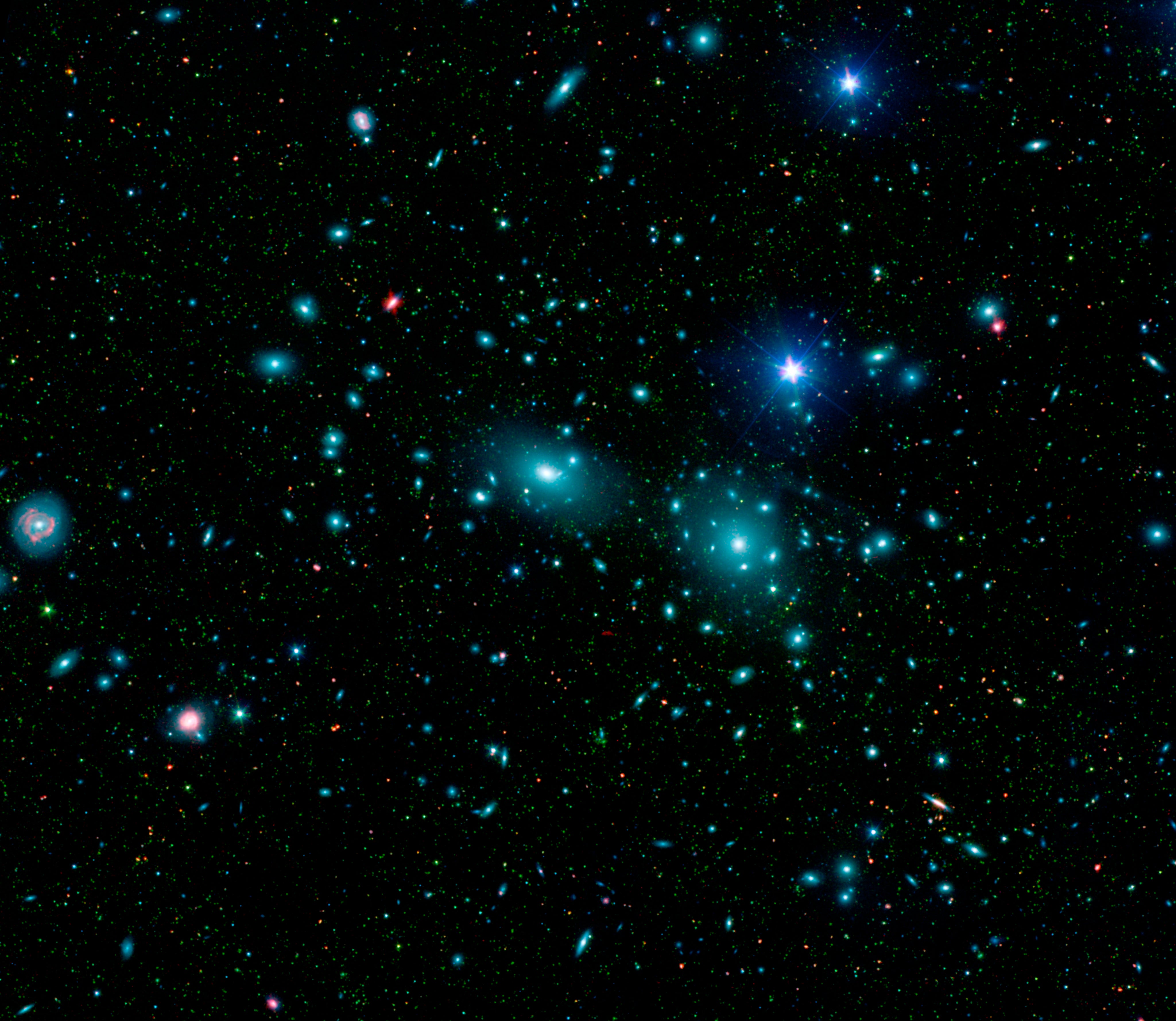
Dark matter is an invisible and mysterious form of matter that has enormous implications for the ultimate fate of our universe.
Dark matter was posited by Dutch astronomer Jan Oort in the 1930 when he studied star motions in the Sun’s neighborhood. Because the galaxy was not flying apart, he reasoned, there must be more matter in the disk to keep the stars from moving away from the galaxy’s center. Oort postulated that in the Sun’s neighborhood, three times as much dark matter existed as bright matter.
Also in the 1930s, American astronomer Fritz Zwicky deduced that much larger clouds of dark matter exist in the Coma cluster of galaxies, about 300 million light-years from Earth. By looking at the Doppler shifts of individual galaxies in the cluster, Zwicky concluded that 10 times more mass than was detected via visible light must be present to keep the galaxies gravitationally bound.
Then in the 1970s, Vera Rubin, working with instrument-maker Kent Ford, began examining the luminous disks and halos of other galaxies and discovered that the outer regions were moving faster than expected. This also implied that there was more matter than was visible, and that this dark matter was widespread in galaxies.
One of the great scientific mysteries of recent decade remains: What exactly is dark matter? Over the years, scientists have proposed many different possibilities. These include massive numbers of normal neutrinos; MACHOs (massive compact halo objects) such as brown dwarfs, neutron stars, and black holes; and WIMPs (weakly interacting massive particles) such as exotic particles, massive neutrinos, and photinos.
In recent years, the leading candidate has been the axion — a hypothetical particle with very small masses. However, separate multimillion-dollar experiments based at the University of Washington and the Institute for Basic Science in Daejeon, South Korea, have not yet found such a particle.
Whatever it is, dark matter carries enormous implications for the structure and future of the cosmos, as it accounts for 26 percent of the universe’s total mass-energy.
For more on Vera Rubin’s groundbreaking work — and the widespread disappointment that she was never recognized with a Nobel Prize — check out this 2016 feature by Sarah Scoles.
Follow Astronomy magazine, the world’s best-selling astronomy magazine:
🌎 Website: https://astronomy.com
📖 Subscribe: http://subscribe.astronomy.com
📘 Facebook: https://www.facebook.com/AstronomyMagazine
📸 Instagram: https://instagram.com/astronomy.magazine
🐦 Twitter: https://twitter.com/AstronomyMag
Shop Celestron telescopes:
🔭 Website: https://celestron.com
Follow Dave Eicher:
📘 Facebook: https://www.facebook.com/davidjohneicher
📸 Instagram: https://instagram.com/eicher.david
🐦 Twitter: https://twitter.com/deicherstar









